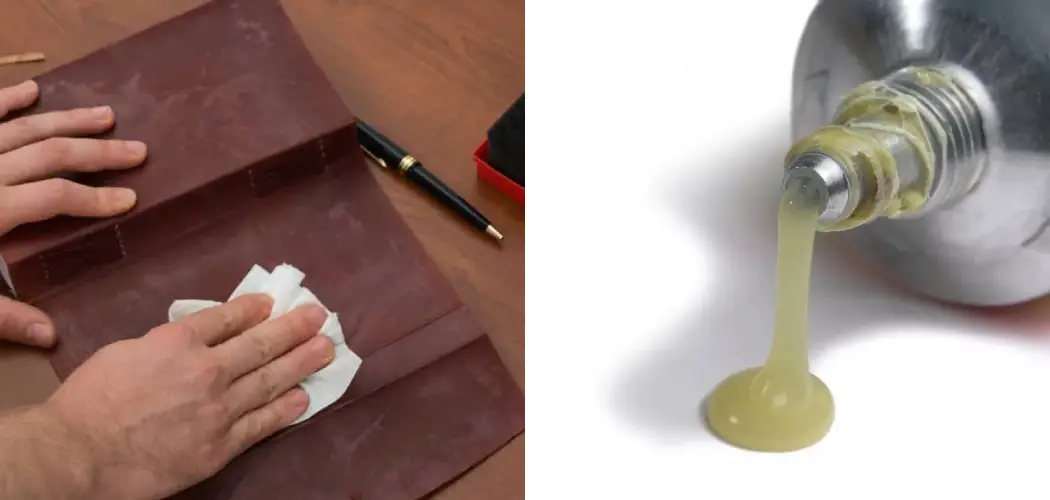Leather is a luxurious and delicate material and should be treated with care. But, if you accidentally get glue on your leather, don’t fret! There are several ways to remove the glue without damaging your leather. In this blog post, we’ll show you some ways how to remove glue residue from leather. Read on to learn more!
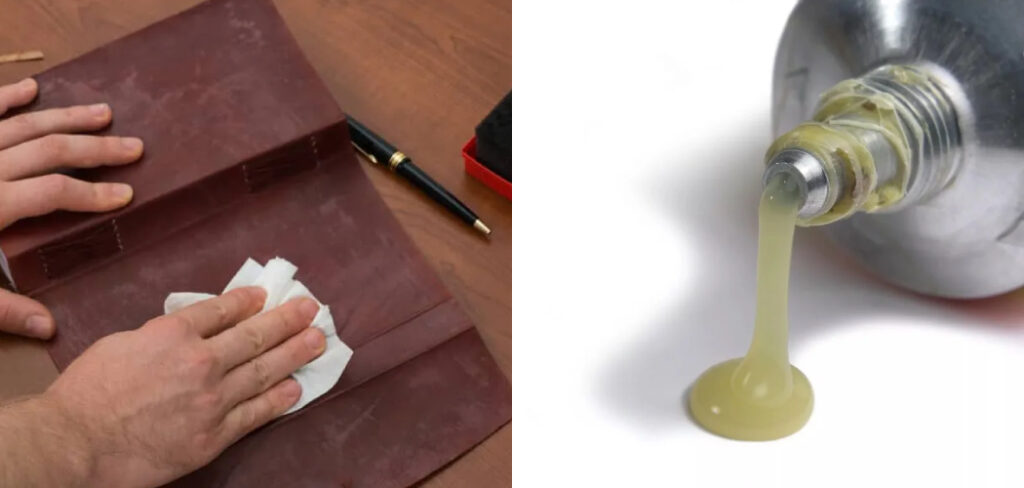
What Is Glue Residue from Leather?
When leather is produced, it goes through a process that includes using glue. This glue residue can be left behind on the leather and can be difficult to remove. Occasionally, the residue can even cause the leather to crack and peel. There are a few ways to remove glue residue from leather, but it is important to be careful so that you do not damage the leather in the process.
One way to remove glue residue is to use a damp cloth to rub the area gently. You can also try using a mild soap or detergent. If these methods do not work, you may need to use a commercial leather cleaner or conditioner. Once the glue residue has been removed, it is important to clean and condition the leather so that it does not become dried out or damaged.
Why Should You Remove Glue Residue from Leather?
If you’ve ever used superglue, you know how difficult it can be to remove the residue from your skin. The same is true for leather; it can be very hard to remove if you get glue on your leather furniture or clothing. In addition to being difficult to remove, glue residue can also damage leather. The solvents in glue can dry out leather, making it cracked and brittle.
Moreover, the adhesive properties of glue can cause it to bond with leather, making it difficult to clean or repair the damage. For these reasons, removing glue residue from leather is important as soon as possible. There are a few simple methods you can use to do this. First, use a soft cloth dampened with warm water to rub the residue off gently. If this doesn’t work, you can try using a mild solvent such as rubbing alcohol or nail polish remover.
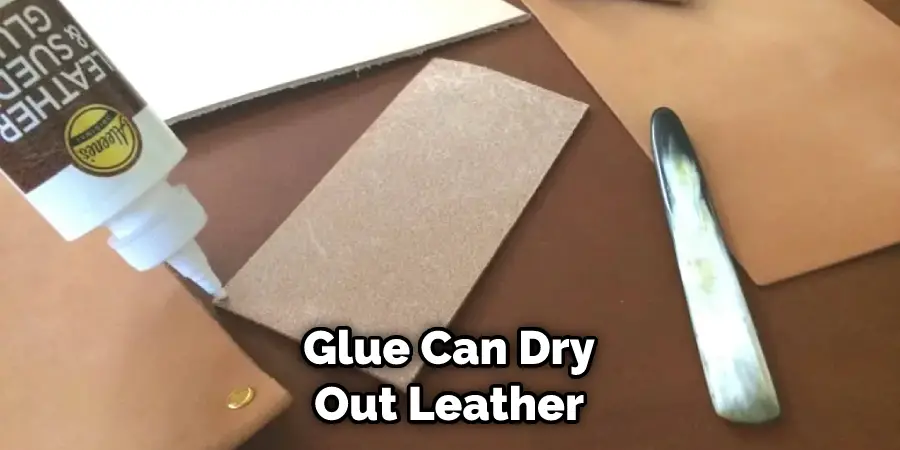
Just be sure to test the solvent on an inconspicuous spot first, as some solvents can damage leather. Then, with a little patience, you should be able to remove the glue residue and restore your leather to its original condition.
7 Ways to Follow How to Remove Glue Residue From Leather
Removing glue residue from leather can be tricky, but it’s important to do it carefully, so you don’t damage the leather. Follow these steps to remove glue residue from your leather surfaces.
1. Identify the Type of Leather
The first step is to identify the type of leather you’re dealing with. There are three main types of leather: aniline, semi-aniline, and pigmented. Each type of leather has a different grain pattern and requires a different cleaning method.
2. Select the Right Cleaning Products
The next step is to select the right cleaning products for your leather. You’ll need a cleaner that’s specifically made for leather, as well as a soft cloth. Avoid using harsh chemicals or abrasive cleaners, as these can damage the leather.
3. Use a Leather Cleaner First
Before using other cleaning products, always test a small area with a leather cleaner to ensure it won’t damage the leather. Apply the cleaner to a soft cloth and gently rub it into the area with the glue residue. Wipe away any excess cleaner with a dry cloth.
4. Try White Vinegar or Alcohol
You can try using white vinegar or alcohol if the leather cleaner doesn’t work. Apply either of these products to a soft cloth and gently rub it into the area with the glue residue. Wipe away any excess cleaner with a dry cloth.
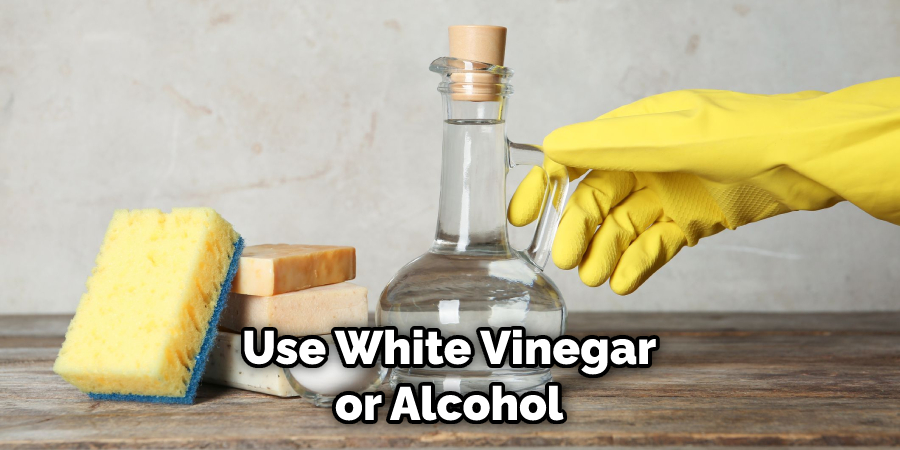
5. Dab with a Dry Cloth
If you still have trouble removing the glue residue, you can try dabbing the area with a dry cloth. This will help to loosen the residue and make it easier to remove.
6. Don’t Use Harsh Chemicals
As we mentioned before, avoiding harsh chemicals on leather is important. These can damage the surface and make it more difficult to remove the residue.
7. Avoid Heat and Friction
Finally, avoid using heat or friction to remove the glue residue. This can damage the leather and make it more difficult to clean. If you’re having trouble removing the residue, we recommend taking it to a professional cleaner.
That’s it! You’ve now learned how to remove glue residue from leather. Remember, it’s important to act quickly when you spill glue on leather, as the longer it sits, the harder it will be to remove. However, if you’re careful and use the right solvent, you should be able to clean up the mess with no problem.
How to Remove Super Glue from Leather
Super glue is an incredibly strong adhesive, which is why it’s so useful for repairing broken items. However, it can also be very difficult to remove if it gets on your clothes or furniture. So if you’ve accidentally glued your leather couch or jacket, don’t panic! Instead, you can use a few simple methods to break down the bond and get the glue off.
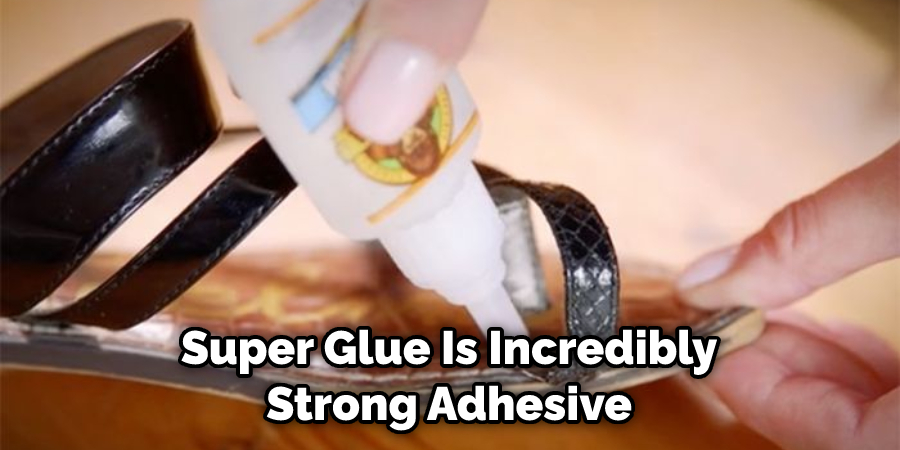
One way to remove super glue from leather is to apply a small amount of acetone-free nail polish remover to the area. Dip a cotton ball into the remover and rub it over the glued area in a circular motion. The nail polish remover will help to break down the glue without damaging the leather. Once the glue has been loosened, you can gently scrape it off with a credit card or a dull knife.
If acetone-free nail polish remover isn’t available, you can also try using white vinegar. Apply a small amount of vinegar to a clean cloth and rub it over the glued area. The vinegar acid will help break down the glue, making it easier to remove. Once the vinegar has had a chance to work, you can gently scrape off the glue.
Once you’ve removed all of the glue, rinse the area with warm water and mild soap. This will help to remove any residual products that could damage the leather. Finally, dry the area with a clean towel and allow it to air dry completely before using it again.
How to Remove Gorilla Glue from Leather
Gorilla Glue is a type of adhesive that is known for its strength and waterproof properties. While it can be a useful product for many purposes, it can also be difficult to remove once it gets on your clothing. So if you have accidentally glued your leather jacket to your skin, don’t panic! You can do a few things to loosen the bond and remove the glue.
First, try gently pulling the leather away from your skin. If that doesn’t work, you can try heating the glue with a hair dryer or soaking the area in warm water. If those methods don’t work, you may need to use a solvent such as acetone or rubbing alcohol. Be sure to test the solvent on a small leather area first to ensure it won’t damage the material.
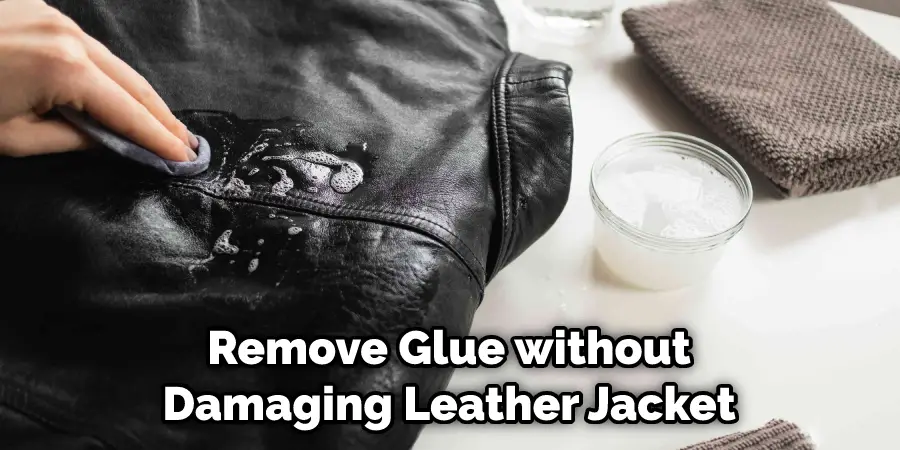
Once you’ve loosened the bond, gently scrape away the Gorilla Glue with a blunt object like a butter knife. With a little patience, you should be able to remove the glue without damaging your leather jacket.
How to Remove Glue Residue from Leather Furniture
Even the most well-made piece of furniture can end up with a bit of glue residue. Whether it’s from a repair or an accident, dealing with glue on leather can be tricky. If you’re dealing with a small spot, start by dabbing at the area with a soft cloth soaked in warm water. You may need to use a leather cleaner or saddle soap for larger areas. Work in small circles until the glue loosens, then wipe away with a damp cloth.
You may need to repeat this process several times to remove all the residue. If you’re having trouble getting the glue off, you can also try using white vinegar or rubbing alcohol. Be sure to test any cleaner in an inconspicuous spot first, as some chemicals can damage leather. However, with a little patience and the right supplies, you should be able to remove even the most stubborn glue residue from your leather furniture.
How to Remove Glue Residue from Leather Shoes
If you’ve ever had your leather shoes get stuck to a gluey surface, you know how difficult it can be to remove the glue without damaging the leather. Luckily, a few simple household items can help loosen the glue’s grip on your shoes. Just soak a cotton ball in acetone-free nail polish remover and rub it over the glued area. The acetone will dissolve the adhesive without harming the leather.
You can also try using a mixture of equal parts vinegar and water. Another option is to rub the area with a pencil eraser; the abrasiveness will help to break up the glue. Whichever method you choose, test it on an inconspicuous spot first to ensure it won’t damage the leather. With a little patience, you should be able to remove the glue without causing any permanent damage to your shoes.
Frequently Asked Questions
Does Coca Cola Remove Super Glue?
Coca Cola does not mention removing super glue specifically on their website. However, general cleaning procedures for items like Coca Cola typically involve soap and water. Additionally, Coca Cola advises customers to “rinse thoroughly” after using the product and to never use the product on broken glass.
What is the Best Homemade Leather Cleaner?
There are a variety of homemade leather cleaners available online, but it is important to be careful when selecting one to use because not all cleaners are compatible with all types of leather. Some common ingredients found in leather cleaners include soap, water, and polish. It is important to test a cleaner on a small section of your leather before using it on the entire piece to ensure that the cleaner is safe and effective. Some potential benefits of using a homemade leather cleaner include:
beautifying and protecting your leather goods: Cleaners can help to clean and protect your leather goods, restoring their shine and keeping them free from dirt, dust, and other debris.
saving money: Using a homemade cleaner instead of purchasing a commercially available product can save you money in the long run.
improving the overall condition of your leather goods: A well-maintained leather garment will likely last longer than one that is not treated, making it more affordable and convenient to maintain.
Is Rubbing Alcohol Safe on Leather?
Rubbing alcohol is safe to use on leather, as long as the alcohol is diluted properly and the Leathercare product is used as directed. The most important thing to remember is to always test a small part of the leather first to make sure it is safe for use. rubbing alcohol can evaporate quickly and cause damage if it gets into the skin or if it gets on the eyes. If you are using a Leathercare product, make sure to follow the instructions carefully and wait until the product has fully dried before putting any other clothing or accessories on the leather.
Can Baking Soda Remove Super Glue?
Baking soda can be used to remove superglue, but it is not a recommended method. Baking soda is a caustic substance and can damage the surface of the object it is being used on. Superglue may also react with baking soda and create an explosive mixture that could result in serious injury. Instead of using baking soda, try using a mild cleaner such as soap and water, or a glass cleaner that is specifically designed for removing superglue.
Conclusion
Glue residue can be a pain to remove, but it can be done with the right tools and techniques. Hopefully, this guide has shown you how to remove glue residue from leather without damaging the surface easily. Have any tips of your own? Share them in the comments below!

